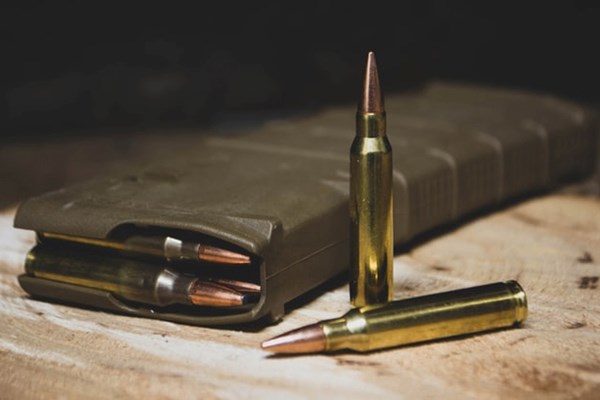Large-capacity magazine ban cut incidence and number of people killed in high-fatality mass shootings
Large-capacity magazines (LCMs) are defined as any ammunition feeding device holding more than 10 bullets. They play an important role in the discussion of high-fatality mass shootings as LCMs are used at a disproportionally high level of these mass shootings. As the authors note, this is due to active shooters perceiving LCMs to be more effective at killing people; in fact, LCMs are more effective at killing people. LCMs increase the number of rounds that can be fired before having to reload, in turn, increasing the likelihood of individuals receiving more than 1 bullet wound. Evidence shows that being struck by multiple bullets increases fatality rate. Secondly, LCMs provide shooters extended periods of cover. When a shooter is firing, others are unable to fire back – decreasing the time allowed for people to intervene or for individuals to move out of harm’s way.
Definitions of mass shootings come with varying casualty numbers, ranging from 2 – 5 victims. The study focused on “high fatality” mass shootings, as defined by more than 5 deaths due to firearms in a single incident. In these cases, the perpetrator utilized an LCM at least 64% of the time. In addition, high fatality mass shootings occurred at more than double the rate in states without LCM bans than states with LCM bans and the death toll was 62% higher when LCMs were used. In fact, high fatality mass shootings also occurred at a higher rate in non-ban states whether or not a LCM was used even when taking common variables in to consideration (population density, median income, employment rate, etc.). Finally, the annual high fatality mass shooting death rate in non-LCM ban states was 3 times higher than LCM ban states.
The authors note that legal restrictions of firearms are merely one aspect of the multifaceted and multidisciplinary approach to reducing firearm injuries and deaths. However, legislation banning LCMs demonstrates a substantial and statistically significant reduction in both incidence and death rate. Decreasing the ability to obtain perceived effective methods of killing may decrease the number of high fatality mass shootings while increasing the number of pauses during a specific shooting provides opportunity for people to intervene and/or reach safety. Ultimately, this will reduce the number of victims. The authors note the patchwork of state laws and the transit of firearms across state lines as a confounding factor in the effectiveness of LCM bans. It begs the question - would a national ban increase the effectiveness of an LCM ban at reducing mass shootings and further victims of their heinous crimes?
Abstract: Klarevas L, Conner A, Hemenway D. The Effect of Large-Capacity Magazine Bans on High-Fatality Mass Shootings, 1990-2017. Am J Public Health. 2019;109(12):1754-1761.
Objectives. To evaluate the effect of large-capacity magazine (LCM) bans on the frequency and lethality of high-fatality mass shootings in the United States.
Methods. We analyzed state panel data of high-fatality mass shootings from 1990 to 2017. We first assessed the relationship between LCM bans overall, and then federal and state bans separately, on (1) the occurrence of high-fatality mass shootings (logit regression) and (2) the deaths resulting from such incidents (negative binomial analysis). We controlled for 10 independent variables, used state fixed effects with a continuous variable for year, and accounted for clustering.
Results. Between 1990 and 2017, there were 69 high-fatality mass shootings. Attacks involving LCMs resulted in a 62% higher mean average death toll. The incidence of high-fatality mass shootings in non-LCM ban states was more than double the rate in LCM ban states; the annual number of deaths was more than 3 times higher. In multivariate analyses, states without an LCM ban experienced significantly more high-fatality mass shootings and a higher death rate from such incidents.
Conclusions. LCM bans appear to reduce both the incidence of, and number of people killed in, high-fatality mass shootings.
PMID: 31622147
EMRA + PolicyRx Health Policy Journal Club: A collaboration between Policy Prescriptions and EMRA
 As emergency physicians, we care for all members of society, and as such have a unique vantage point on the state of health care. What we find frustrating in our EDs - such as inadequate social services, the dearth of primary care providers, and the lack of mental health services - are universal problems. As EM residents and fellows, we learn the management of myocardial infarctions and traumas, and how to intubate, but we are not taught how health policy affects all aspects of our experience in the ED. Furthermore, given our unique position in the health care system, we have an incredible opportunity to advocate for our patients, for society, and for physicians. Yet, with so many competing interests vying for our conference education time, advocacy is often not included in the curricula. This is the gap this initiative aims to fill. Each month, you will see a review of a new health policy article and how it is applicable to emergency physicians.
As emergency physicians, we care for all members of society, and as such have a unique vantage point on the state of health care. What we find frustrating in our EDs - such as inadequate social services, the dearth of primary care providers, and the lack of mental health services - are universal problems. As EM residents and fellows, we learn the management of myocardial infarctions and traumas, and how to intubate, but we are not taught how health policy affects all aspects of our experience in the ED. Furthermore, given our unique position in the health care system, we have an incredible opportunity to advocate for our patients, for society, and for physicians. Yet, with so many competing interests vying for our conference education time, advocacy is often not included in the curricula. This is the gap this initiative aims to fill. Each month, you will see a review of a new health policy article and how it is applicable to emergency physicians.



